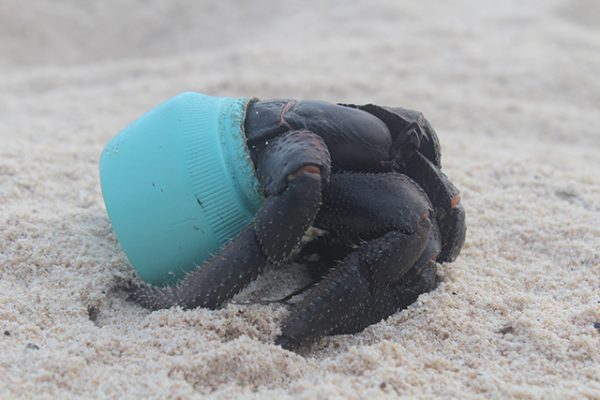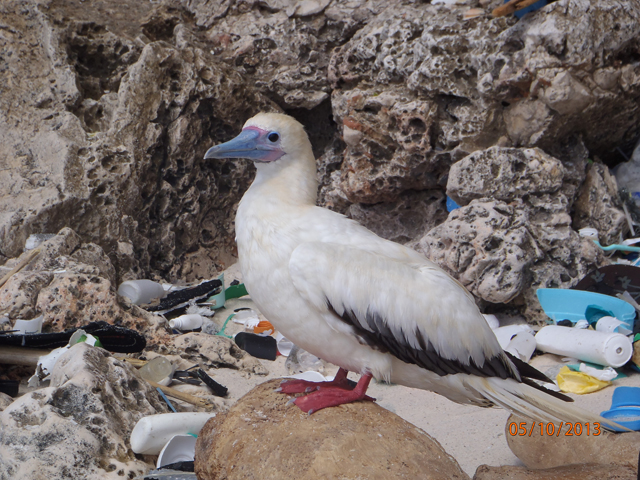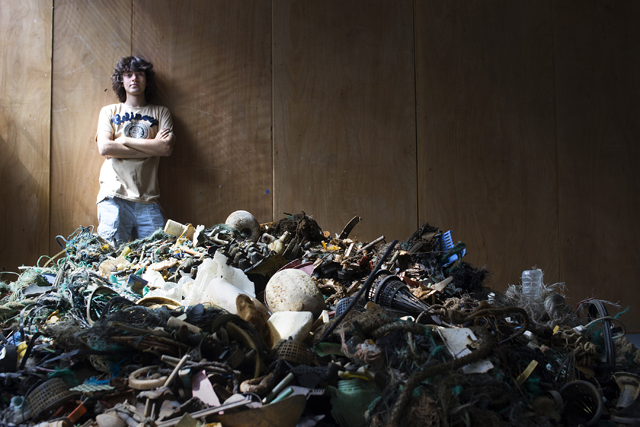Henderson Island, part of the UK's overseas territory in the South Pacific and one of the world’s most remote islands, has been found to be littered with an estimated 37.7million pieces of plastic.
Beaches around the island were thoroughly surveyed between the end of May and middle of August 2015 by researchers from the University of Tasmania and the RSPB. The researchers found up to 671 items of plastic for every square metre of beach surveyed.
This huge density of litter is despite Henderson’s extremely remote position, and the fact that it is not inhabited by humans. However, it is close to the centre of the South Pacific Gyre, the circulatory ocean that carries huge volumes of floating litter on the sea’s surface.

Plastic debris on East Beach, Henderson Island. Credit Dr. Jennifer Lavers
Plastic in 99 per cent of seabirds by 2050
CSIRO and Imperial College London researchers predict that plastic ingestion will affect 99 per cent of the world’s seabird species…
Top tips for keeping plastic out of the ocean
Quick tips to reduce waste
Teenager invents feasible solution to clean up ocean plastic
The Ocean Cleanup is seeking to crowd fund $2million for the next phase of the project
Dr Jennifer Lavers, lead researcher, said: ‘Far from being the pristine ‘deserted island’ that people might imagine of such a remote place, Henderson Island is a shocking but typical example of how plastic debris is affecting the environment on a global scale.”
‘Based on our sampling at five sites we estimated that more than 17 tonnes of plastic debris has been deposited on the island, with more than 3,570 new pieces of litter washing up each day on one beach alone.’
She added: ‘Plastic debris is an entanglement and ingestion hazard for many species, creates a physical barrier on beaches to animals such as sea turtles, and lowers the diversity of shoreline invertebrates.
‘Research has shown that more than 200 species are known to be at risk from eating plastic, and 55% of the world’s sea birds, including two species found on Henderson Island, are at risk from marine debris.’

So-called “disposable” or “single-use” plastic items on Henderson Island. Credit Dr. Jennifer Lavers
Read the full report
The “Exceptional and rapid accumulation of anthropogenic debris on one of the world’s most remote and pristine islands” report, by Jennifer L. Lavers and Alexander L. Bond, can be read in full at www.pnas.org/cgi/doi/10.1073/pnas.1619818114
What can you do?
Join a beach clean and survey
Take the Plastic Challenge
Dr Laura Foster, Marine Conservation Society (MCS) head of pollution, said: ‘This truly highlights the global problem of marine litter which is why, through our Beachwatch project, we not only encourage beach cleans to remove litter but we also ask our volunteers to survey what they find. This data can then be used on a local, national and global level to stop litter getting into our oceans and ending up in places like this.’







